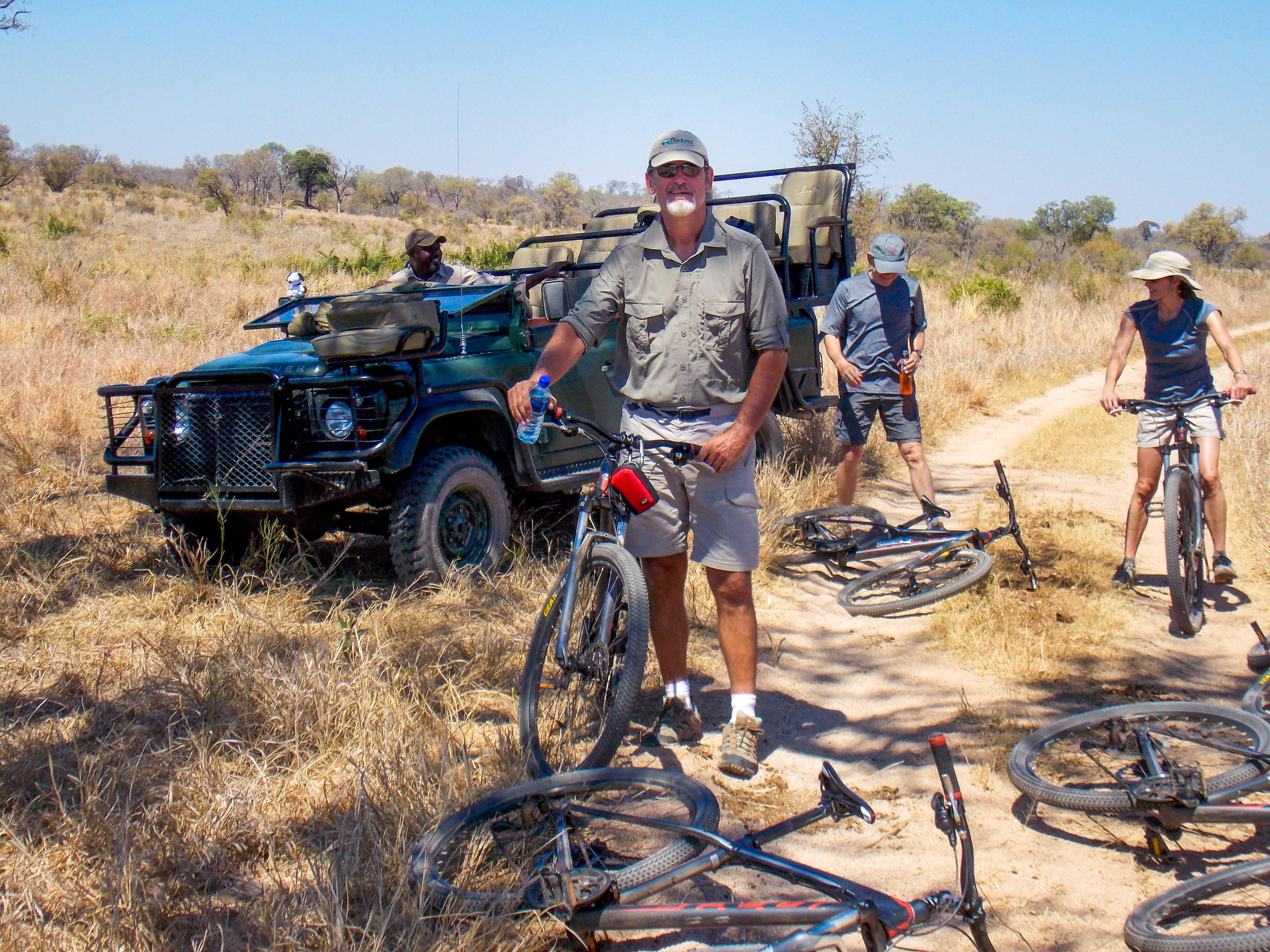Cycling Through History: Forest Park, As Seen Through a City Cycling Tour
City Cycling Tour's Chris Gerli, photographed by Forest Park Forever
This past July, thousands of people sat on the gorgeous green lawn of Art Hill to celebrate Fair Saint Louis and Independence Day, watching as fireworks exploded in the sky above the Emerson Grand Basin. I was one of the thousands mesmerized that night. It amazes me to think that as recently as 15 years ago, that beautiful Grand Basin was nothing more than a dilapidated shadow of what it is today.
Wanting to know more about the history of its restoration — and enjoy some quality recreation — I signed up to take a City Cycling Tour of Forest Park. Led by the company's owner Chris Gerli, $35 dollars got me a 90-minute Highlight Tour complete with bicycle, helmet and water bottle — not to mention the infinite patience of Chris, who was kind enough to refresh my memory on the basics of bicycle riding.
After 27 years in the electrical-contracting business, Chris left his profession to pursue his two true passions: cycling and history. Chris put his heart and soul into researching this tour, spending more than nine months rifling through old newspapers and reading different documents provided by libraries around town. After consuming all the information he could, he was able to put together a narrated tour with the cooperation of the City of St. Louis’ Department of Parks, Recreation and Forestry.
I’ll be the first to admit that as a fairly non-athletic person, I was a little nervous about riding a bike for 90 minutes. The ride was actually very relaxing, and the five stops were spaced out perfectly, with breaks to get off your bike and to rehydrate.
The first stop was just outside the Dennis & Judith Jones Visitor and Education Center, where Chris explained the origins of Forest Park. It’s pretty fascinating stuff, and it all started with the conception of the Park in 1863. Today the Park is 500 acres larger than Central Park, but back in the 19th century it was even larger. It was originally designed as a “driving park,” with large enough lanes for a full-sized carriage to roll through at a leisurely pace. The most interesting thing to me, however, was hearing that there was once something called a hippodrome where the Missouri History Museum stands today. This structure was a one-mile oval covered in thick wood that was used for carriage racing. Think drag racing in the Victorian Age!
The site of the hippodrome was the second stop on the tour, on the front steps of the History Museum. This is where Chris pointed out that we were standing at the former entrance to the Louisiana Purchase Exposition, more popularly known as the 1904 World’s Fair. St. Louis wanted to mount the grandest fair the world had ever seen, and by all accounts the city succeeded. Chris is incredibly knowledgeable on this subject, and was happy to answer every question I had.
The next stop took me to my favorite place in the entire city—the foot of the Grand Basin, looking up at Art Hill and the Saint Louis Art Museum. The museum is actually one of only two remaining structures still standing today that were part of the World’s Fair. That building served as the Palace of Fine Arts, and was designed by the same architect who designed the Supreme Court building in Washington, D.C. Chris explained how the urban driving park had to be redesigned for the fair — so much so that the revisions and building started in 1901, a full three years before the opening day.


After satisfying my thirst for World’s Fair history, we rode past gorgeous flowers and down gravel paths to the second-to-last stop on the tour, in front of the Muny’s lower entrance. It turns out that the original theater was actually built in 1917 to accommodate the national convention for the Advertising Club of America, which was being held in St. Louis that year. Today, as many St. Louisans and theater buffs know, the Muny is one of the nation’s most beloved and well-respected outdoor theaters. The first performance was an opera, Verdi’s Aida, which was staged later in 1917. The first 1,200 people to arrive that day sat in the back sections for free. The tradition of free seats at the Muny continues to this day.
The last stop on my Highlight Tour was near a field of wildflowers and prairie grass that’s so beautiful, it makes you wonder what Forest Park was like when it was truly a wild space. Across from the field stands a monument to the Confederacy, which was built — with controversy — 50 years after the Civil War had ended.
It was next to that very field of wildflowers where a memorial service was held for Martin Luther King Jr. in April of 1968. More than 13,000 St. Louisans marched from the Arch grounds to Forest Park, where they stood, holding hands and remembering what Dr. King represented. Chris told me that in his research he’d never seen it mentioned that it took place in plain sight of the Confederacy Memorial. We took a moment to fasten our helmets back on and take one last look before we pedaled back to the Visitor Center.
As most readers know, Forest Park fell into disrepair in the latter part of the 20th century, but through the remarkable partnership between the City of St. Louis and Forest Park Forever, it has been reborn. More than $100 million dollars has been invested so far on the restoration, and today the Park stands just as beautifully as it was when more than 19 million people traipsed through its grounds at the World’s Fair.
During its dedication ceremony in 1876, Forest Park was opened with a promise that a “Keep Off The Grass” sign would never be posted within its boundaries. In Chris’ words, “Forest Park was designed to be very well used — and very well loved.”
And it has been, for 138 years.
To cycle through history yourself, go to citycyclingtours.com, or call Chris at 314-616-5724. You can also look for Chris — and his white van and row of waiting bikes — between the two parking lots to the south of the Visitor Center.

